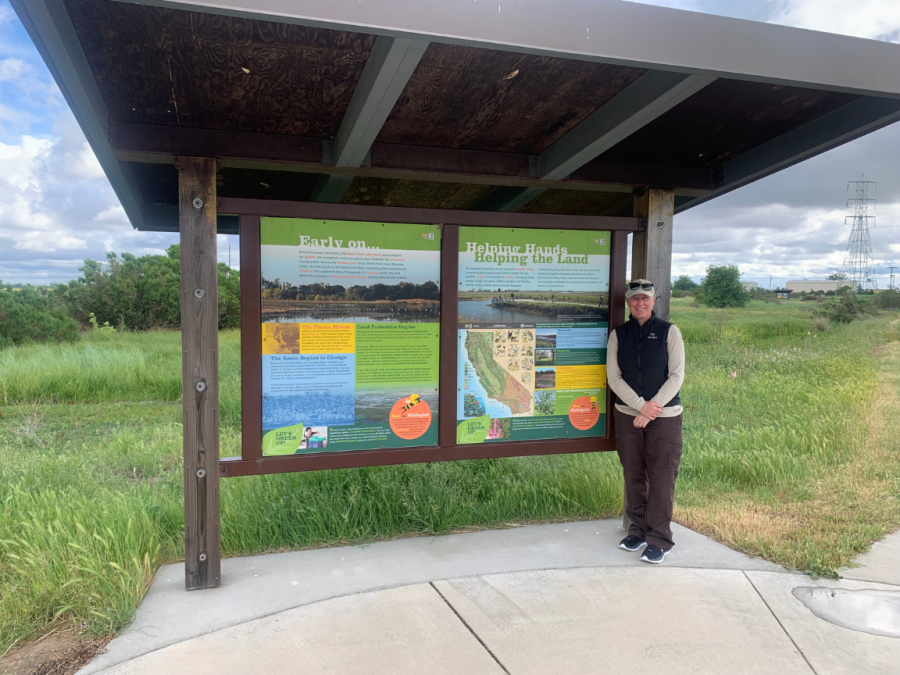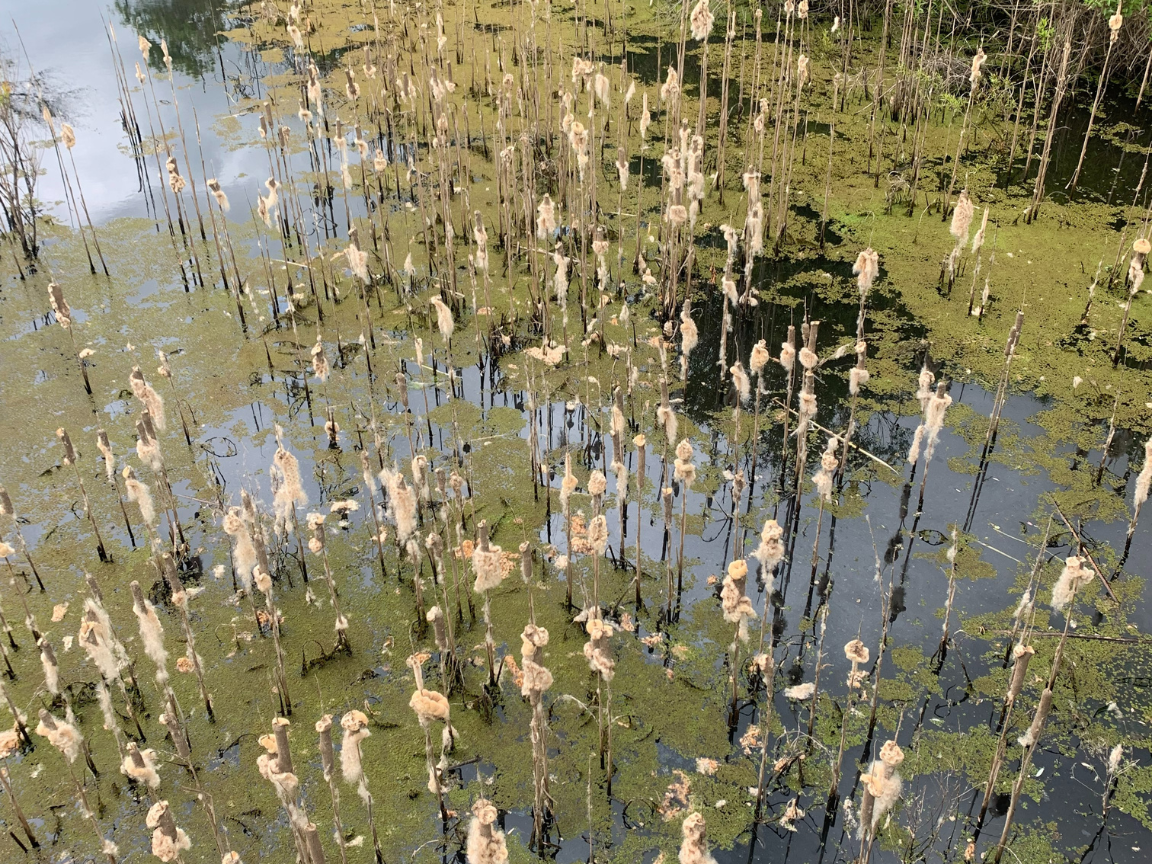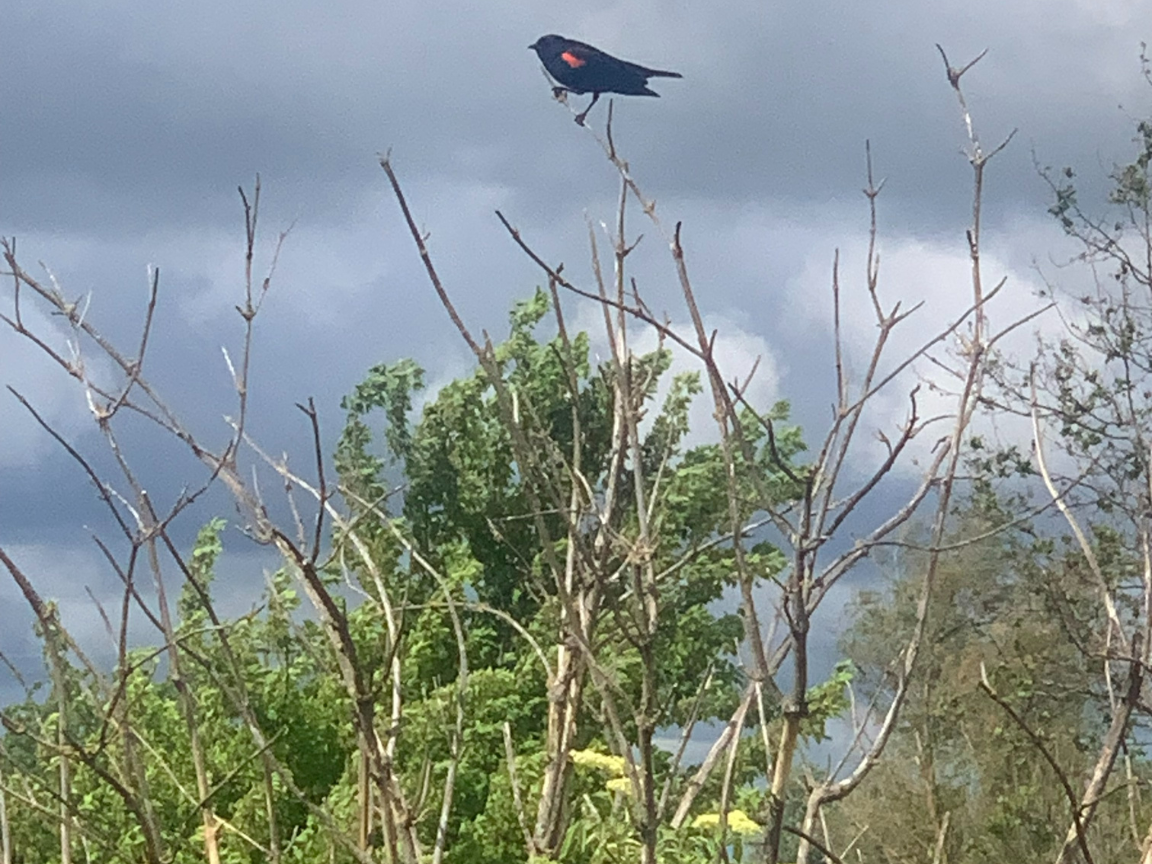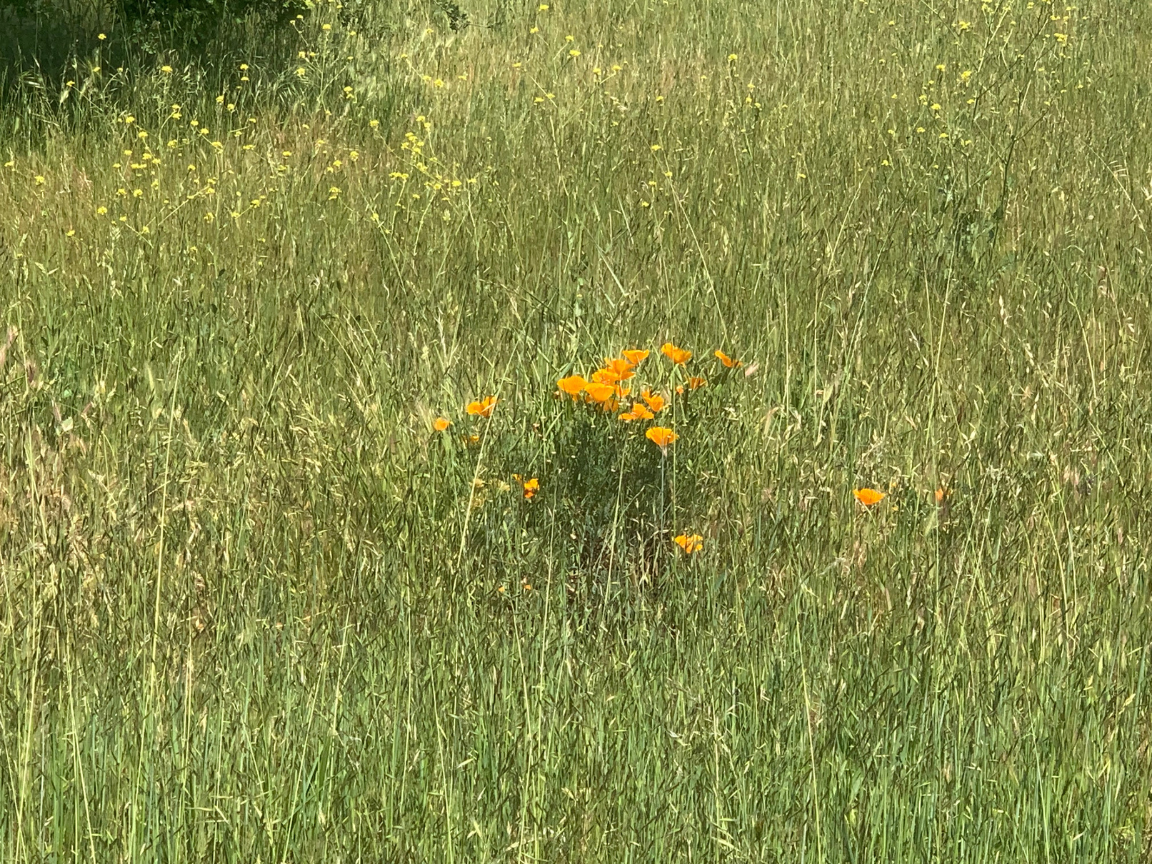Local nature refuge welcomes plant and animal lovers
Stone Lakes Park Ranger Amy Hopperstad standing next to an interpretative kiosk. Stone Lakes National Wildlife Refuge is located at 1624 Hood Franklin Road.
Just under nine miles southwest of Cosumnes River College, nestled between Interstate 5 and the Sacramento Delta lies Stone Lakes National Wildlife Refuge.
Here, among the tall trees and aquatic plants, dozens of male Red-winged Blackbirds dive-bomb, squawk and screech at each other driven by lust, desire and envy.
But it’s not a throne they’re after. These aerial gladiators are competing for a female mate.
Stone Lakes Park Ranger Amy Hopperstad said that some of these birds can get a little over-zealous in their pursuit to procreate.
“The reason you see them so boisterous right now is because they are putting on displays for the females for mating and the nesting season,” Hopperstad said. “They are very territorial. If you get too close to their area, they will make a show of it.”
The Red-winged Blackbird is just one of many colorful and charismatic flora and fauna up for observation by the public on any given day in any season at the refuge.
Paved by an ADA-approved cement pathway, the Blue Heron Trails wind through its wetlands and marshes.
Here, one can observe lizards, frogs, bunnies, turtles and even the occasional well-hidden coyote.
Sprinkles of wildflowers, including the California Golden Poppy, attract pollinators while the milkweed that rises out of the water sustains caterpillars that will become Monarch Butterflies.
In addition to plants, mammals, reptiles and amphibians, Biology Department Chair Eli Carlisle said there are lots of good birds at the refuge to observe.
“(There are) owls, ducks and my personal favorite, gulls,” Carlisle said. “I really like gulls.”
Carlisle said that if you’re lucky, you’ll see the Sandhill Cranes in winter to early spring as they rest from migration.
“They’ll stop by any wetlands. You can seed a lot of them,” Carlise said. “They’re really cool.”
Hopperstad said she recommended coming in the early morning and bringing a hat, a pair of binoculars and something to drink.
“Especially in the summer and early fall, (when it’s) hot and dry, come out in the early morning,” Hopperstad said. “That’s when the birds will be most active.”
Despite the drama species like the Red-winged Blackbird brings to the refuge, Hopperstad said people come to find quiet and often sit with paints, easels and journals.
“It’s a really peaceful place,” Hopperstad said.
The refuge is open seven days a week from dawn to dusk. Admission and parking are free.
To find more on Stone Lakes National Wildlife Refuge, click here.





